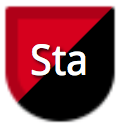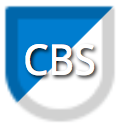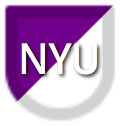Welcome back for the second in our series of posts offering analysis of the data we are receiving on MBA DecisionWire. For the uninitiated, MBA DecisionWire is a resource that allows candidates to share where they’ve decided to attend business school based on the offers they received. In this, its inaugural season, the rate of entries is ramping up as students make their final choices for the next academic year.
Popular School Pairings
In our first post in this series, we looked at schools that tend to draw some of the same applicants. Those popular school pairings included the Michigan’s Ross School of Business and Duke’s Fuqua School, the University of Chicago Booth School and Kellogg School of Management, and Stanford Graduate School of Business (GSB) and Harvard Business School.
Today, we wanted to look at a few more popular school pairings to understand what about these schools makes candidates who apply to one often also apply to the other, as well as where the candidates who get into both schools opt to enroll. Of course, because we are currently working with merely hundreds of entries, we should stress that these insights are anecdotal and should not be used for anything more than pure interest.


Stanford GSB & UC Berkeley’s Haas School
# of Candidates Applying to Both Schools: 40
# of Candidates Admitted to Both Schools: 1 (2.4%)
Where Those Admitted to Both Enrolled: Stanford
# of Candidates Admitted at Both but Enrolled at Neither: 0
# of Candidates Admitted to Stanford and Not Haas: 4 (10%)
# of Candidates Admitted to Haas and Not Stanford: 13 (32.5%)
Why There Is Overlap in Applicants to These Schools
Both geography and school fit play a role in the overlap of applicants to these two schools. Based in northern California in close proximity to Silicon Valley, both schools have strong ties to the entrepreneurial and technology cultures of the valley. Both schools also have reasonably small class sizes, which helps establish their learning cultures. Keep in mind that Stanford is the most selective MBA program in the world—accepting roughly six percent of applicants each year—and this selectivity is reflected in the above data.


Columbia Business School & NYU Stern School of Business
# of Candidates Applying to Both Schools: 40
# of Candidates Admitted to Both Schools: 11 (27.5%)
Where Those Admitted to Both Enrolled: Columbia 2 (5%), Stern 1 (2.4%) (Wharton 4)
# of Candidates Admitted to Both but Enrolled at Neither: 8 (20%)
# of Candidates Admitted to Columbia and Not Stern: 4 (10%)
# of Candidates Admitted to Stern and Not Columbia: 19 (47.5%)
Why There Is Overlap in Applicants to These Schools
Columbia and NYU Stern are both based in New York City, so obviously candidates that want to pursue their MBA in the corporate center of the United States will include these schools at the top of their lists. Both schools also have strong reputations in the area of finance and work closely with Wall Street firms.


University of Pennsylvania’s Wharton School & University of Chicago Booth School of Business*
# of Candidates Applying to Both Schools: 44
# of Candidates Admitted to Both Schools: 15 (34.09%)
Where Those Admitted to Both Enrolled: Wharton 10 (22.72%), Chicago 3 (6.81%)
# of Candidates Admitted to Both but Enrolled at Neither: 2 (4.54%)
# of Candidates Admitted to Wharton and not Booth: 1 (2.27%)
# of Candidates Admitted to Booth and not Wharton: 18 (40.9%)
Why There Is Overlap in Applicants to These Schools
Both these schools are large and located in urban environments, although the cities of Philadelphia and Chicago are quite different. Both schools are recognized as powerhouses in the area of finance, although they are also both strong in many other disciplines.
*only 2016 data was used for this pairing
We hope you found this analysis interesting. Look for similar posts in the coming weeks. And if you’ve made a decision about MBA enrollment but haven’t yet submitted via MBA DecisionWire, please consider doing so. It’s anonymous and only takes a minute.










